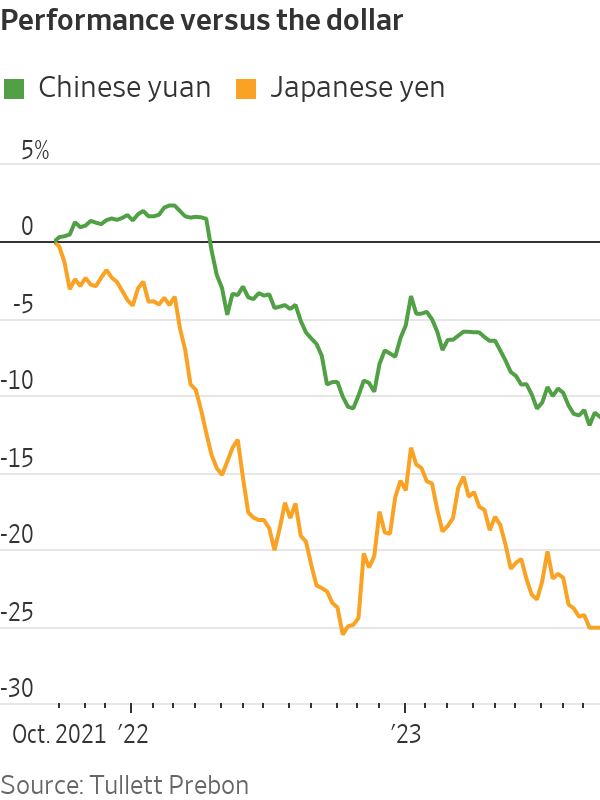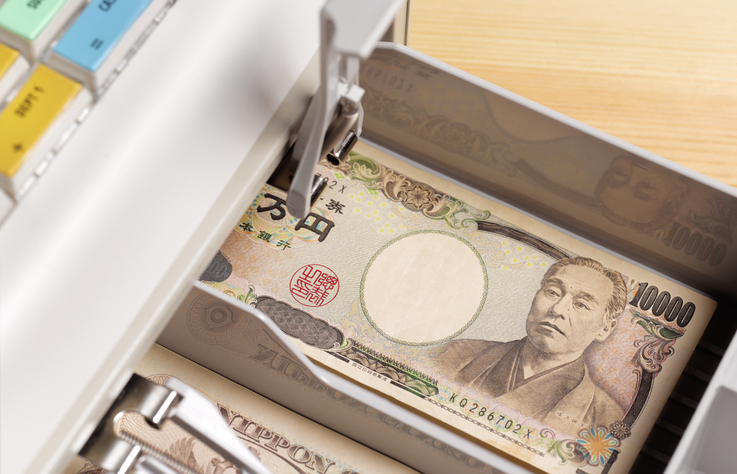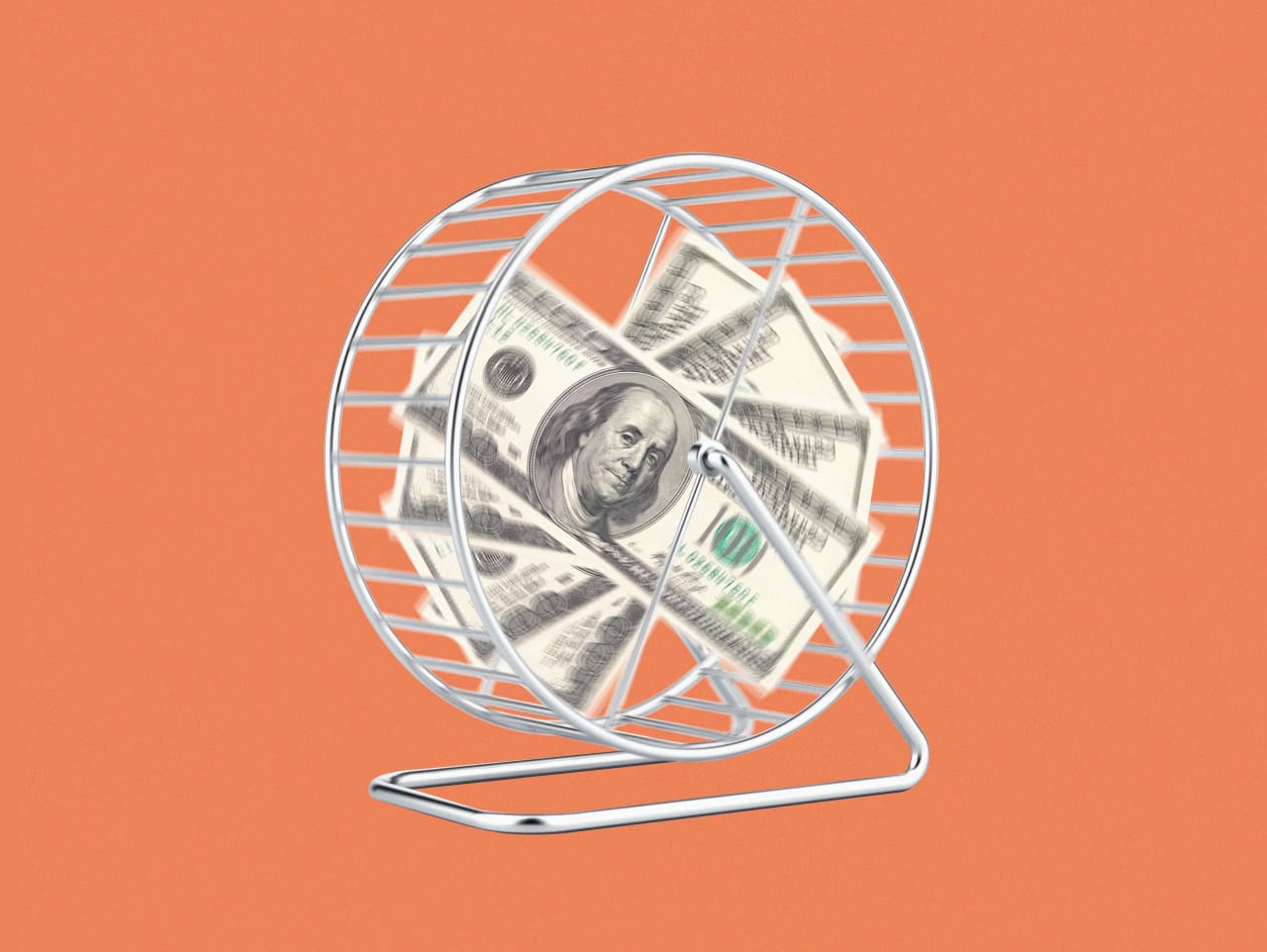The Yuan and Yen Need the Fed’s Help. They Might Not Get It.
Being a loose monetary policy outlier is an uncomfortable place to be these days
All eyes are on the Federal Reserve meeting this week. Central bankers at Asia’s two largest economies will be paying extra attention.
The Chinese yuan and Japanese yen are both hovering at their lowest levels against the dollar in more than a decade. The yuan has lost 13% versus the dollar since the beginning of 2022 while the yen has dropped 22%.
Both countries are grappling with weakening currencies—but their economies are in quite different situations. China must ward off deflation as its real estate implosion continues to weigh on industry and consumer sentiment. Japan, on the other hand, is contending with its highest inflation in decades.

Yet there are some important similarities too. Both countries’ central banks have pursued relatively loose monetary policies as growth challenges have mounted—in contrast with most other developed economies, which have been raising rates rapidly. China has been cutting interest rates and the amount of cash banks must hold in reserve to juice up its economy. Japan is hesitant to give up its longstanding policy of targeting ultra low interest rates in fear that the country could eventually slip back into deflation or near-deflation, too—a problem it wrestled with for years in the wake of its own burst asset bubble in the 1990s.
Widening interest rate differentials with the U.S. have put both currencies under pressure. Yields on Japan’s 10-year government bonds are 3.6 percentage points lower than on U.S. equivalents. The difference between Chinese and U.S. bonds is 1.7 points.
Both currencies have nonetheless staged a modest rebound from their lows lately. The People’s Bank of China warned speculators not to bet against the yuan earlier this month. Around the same time, Bank of Japan Gov. Kazuo Ueda told domestic media that an end to the BOJ’s negative rate policy could be in the cards if its 2% inflation target is sustained.
The risk of capital outflows probably makes China uneasy. It saw net outflows pick up to $42 billion in August, the fastest pace since 2016, according to Goldman Sachs. Given the country’s semi-closed capital account, there are many tools it can employ to slow the pace of depreciation. Borrowing costs for the offshore yuan have gone up, which could deter some short-term speculators.
Yet ultimately, economic fundamentals—and monetary policy—will still drive the yuan’s trend. While the Fed looks likely to pause its rate increases, a stronger-than-expected economy could keep U.S. rates higher for longer. To stabilise its economy, China will likely need more monetary and fiscal stimulus than has been unveiled so far—meaning an even higher interest rate differential and probably, higher imports once fiscal stimulus starts to kick in. Both of those will tend to weigh on the currency, especially if U.S. rates stay parked at their current high level in 2024.
In Japan, meanwhile, the central bank looks likely to tighten eventually as it becomes more confident that inflation—at a low level—has become more baked into households’ expectations. Japan’s core inflation, which excludes fresh food, has stayed above the central bank’s 2% target for more than a year already. Japan’s 10-year government bond yields rose to their highest level since 2014 recently.
China and Japan’s plunging currencies may chart different paths going forward—especially since the yen is already down so far against the dollar over the past two years. But they could both use an assist from the Fed, which may not be forthcoming for quite a while.
 Copyright 2020, Dow Jones & Company, Inc. All Rights Reserved Worldwide. LEARN MORE
Copyright 2020, Dow Jones & Company, Inc. All Rights Reserved Worldwide. LEARN MORE
This stylish family home combines a classic palette and finishes with a flexible floorplan
Just 55 minutes from Sydney, make this your creative getaway located in the majestic Hawkesbury region.
The remote northern island wants more visitors: ‘It’s the rumbling before the herd is coming,’ one hotel manager says
As European hot spots become overcrowded , travellers are digging deeper to find those less-populated but still brag-worthy locations. Greenland, moving up the list, is bracing for its new popularity.
Aria Varasteh has been to 69 countries, including almost all of Europe. He now wants to visit more remote places and avoid spots swarmed by tourists—starting with Greenland.
“I want a taste of something different,” said the 34-year-old founder of a consulting firm serving clients in the Washington, D.C., area.
He originally planned to go to Nuuk, the island’s capital, this fall via out-of-the-way connections, given there wasn’t a nonstop flight from the U.S. But this month United Airlines announced a nonstop, four-hour flight from Newark Liberty International Airport in New Jersey to Nuuk. The route, beginning next summer, is a first for a U.S. airline, according to Greenland tourism officials.
It marks a significant milestone in the territory’s push for more international visitors. Airlines ran flights with a combined 55,000 seats to Greenland from April to August of this year, says Jens Lauridsen, chief executive officer of Greenland Airports. That figure will nearly double next year in the same period, he says, to about 105,000 seats.
The possible coming surge of travellers also presents a challenge for a vast island of 56,000 people as nearby destinations from Iceland to Spain grapple with the consequences of over tourism.
Greenlandic officials say they have watched closely and made deliberate efforts to slowly scale up their plans for visitors. An investment north of $700 million will yield three new airports, the first of which will open next month in Nuuk.
“It’s the rumbling before the herd is coming,” says Mads Mitchell, general manager of Hotel Nordbo, a 67-room property in Nuuk. The owner of his property is considering adding 50 more rooms to meet demand in the coming years.
Mitchell has recently met with travel agents from Brooklyn, N.Y., South Korea and China. He says he welcomes new tourists, but fears tourism will grow too quickly.
“Like in Barcelona, you get tired of tourists, because it’s too much and it pushes out the locals, that is my concern,” he says. “So it’s finding this balance of like showing the love for Greenland and showing the amazing possibilities, but not getting too much too fast.”
Greenland’s buildup
Greenland is an autonomous territory of Denmark more than three times the size of Texas. Tourists travel by boat or small aircraft when venturing to different regions—virtually no roads connect towns or settlements.
Greenland decided to invest in airport infrastructure in 2018 as part of an effort to expand tourism and its role in the economy, which is largely dependent on fishing and subsidies from Denmark. In the coming years, airports in Ilulissat and Qaqortoq, areas known for their scenic fjords, will open.
One narrow-body flight, like what United plans, will generate $200,000 in spending, including hotels, tours and other purchases, Lauridsen says. He calls it a “very significant economic impact.”
In 2023, foreign tourism brought a total of over $270 million to Greenland’s economy, according to Visit Greenland, the tourism and marketing arm owned by the government. Expedition cruises visit the territory, as well as adventure tours.
United will fly twice weekly to Nuuk on its 737 MAX 8, which will seat 166 passengers, starting in June .
“We look for new destinations, we look for hot destinations and destinations, most importantly, we can make money in,” Andrew Nocella , United’s chief commercial officer, said in the company’s earnings call earlier in October.
On the runway
Greenland has looked to nearby Iceland to learn from its experiences with tourism, says Air Greenland Group CEO Jacob Nitter Sørensen. Tiny Iceland still has about seven times the population of its western neighbour.
Nuuk’s new airport will become the new trans-Atlantic hub for Air Greenland, the national carrier. It flies to 14 airports and 46 heliports across the territory.
“Of course, there are discussions about avoiding mass tourism. But right now, I think there is a natural limit in terms of the receiving capacity,” Nitter says.
Air Greenland doesn’t fly nonstop from the U.S. because there isn’t currently enough space to accommodate all travellers in hotels, Nitter says. Air Greenland is building a new hotel in Ilulissat to increase capacity when the airport opens.
Nuuk has just over 550 hotel rooms, according to government documents. A tourism analysis published by Visit Greenland predicts there could be a shortage in rooms beginning in 2027. Most U.S. visitors will stay four to 10 nights, according to traveler sentiment data from Visit Greenland.
As travel picks up, visitors should expect more changes. Officials expect to pass new legislation that would further regulate tourism in time for the 2025 season. Rules on zoning would give local communities the power to limit tourism when needed, says Naaja H. Nathanielsen, minister for business, trade, raw materials, justice and gender equality.
Areas in a so-called red zone would ban tour operators. In northern Greenland, traditional hunting takes place at certain times of year and requires silence, which doesn’t work with cruise ships coming in, Nathanielsen says.
Part of the proposal would require tour operators to be locally based to ensure they pay taxes in Greenland and so that tourists receive local knowledge of the culture. Nathanielsen also plans to introduce a proposal to govern cruise tourism to ensure more travelers stay and eat locally, rather than just walk around for a few hours and grab a cup of coffee, she says.
Public sentiment has remained in favour of tourism as visitor arrivals have increased, Nathanielsen says.
—Roshan Fernandez contributed to this article.
This stylish family home combines a classic palette and finishes with a flexible floorplan
Just 55 minutes from Sydney, make this your creative getaway located in the majestic Hawkesbury region.






















